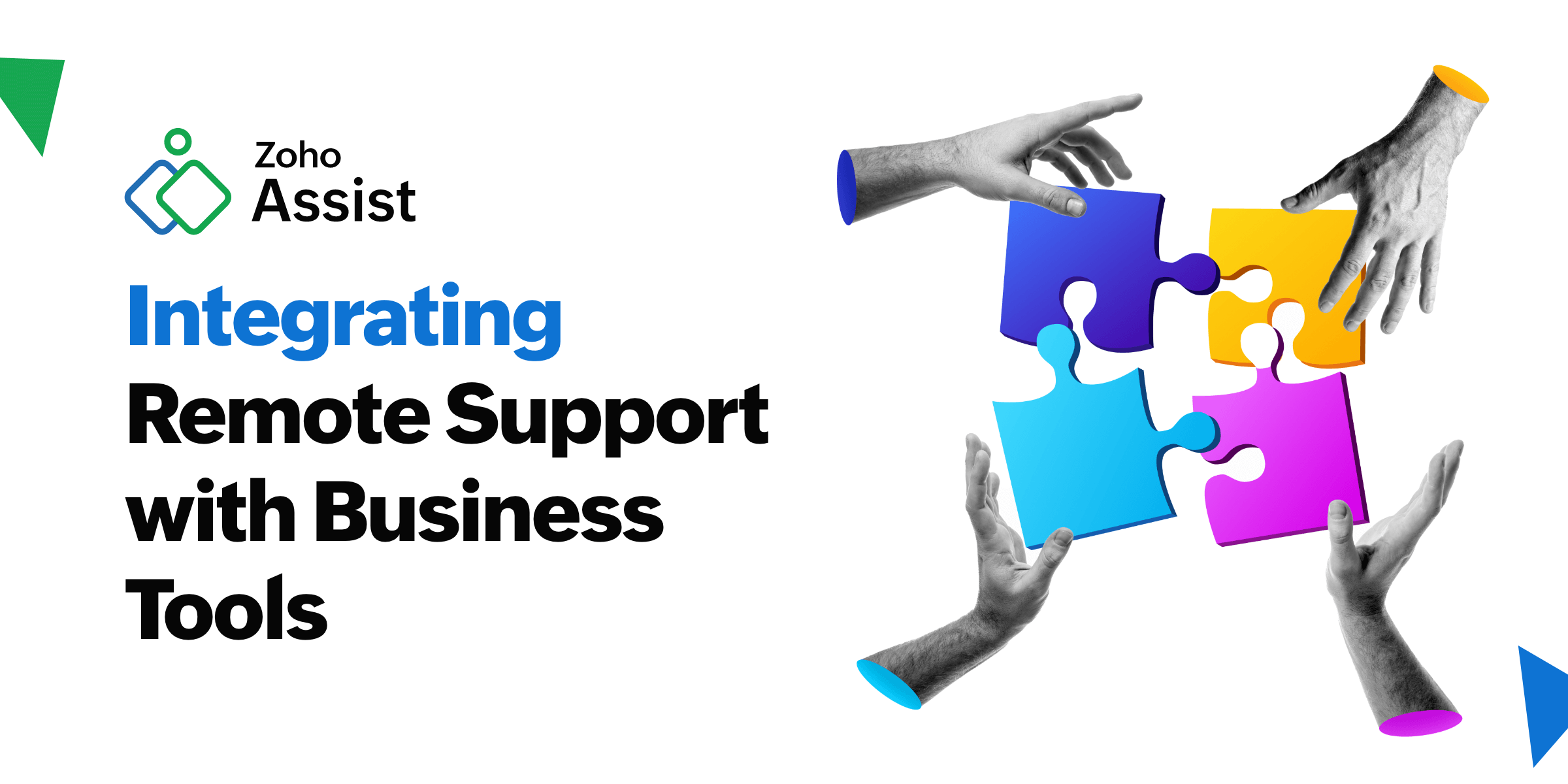- HOME
- Streamlining operations: Integrating remote support with business tools
Streamlining operations: Integrating remote support with business tools
- Last Updated : February 13, 2024
- 122 Views
- 3 Min Read

Technology is a key driver of efficiency and service quality in customer support. This guide explores the process of integrating remote support with other essential tools, such as customer relationship management (CRM) software and ticketing systems. By integrating these tools, businesses can create a unified support system that streamlines operations and improves the overall customer experience.
Assess your integration needs
Before diving into the technical options, businesses should conduct a thorough assessment of their support workflows and identify their specific integration needs. Understanding your requirements ensures that the integrated systems are tailored to address specific pain points and enhance overall efficiency.
Personalize customer support by integrating with CRM software
Integrating remote support tools with CRM software enhances customer interactions. By synchronising customer data between the two systems, support agents gain a holistic view of each customer's history and preferences. This integration enables personalized support, allowing agents to provide more tailored and effective service to their customers.
Example scenario
A customer calls for support, and their CRM profile provides information on previous interactions and their purchase history. Armed with this information, the support agent can anticipate customer needs, offer relevant solutions, and enhance the overall customer experience.
Increase visibility by connecting with ticketing systems
Integrating remote support tools with ticketing systems streamlines the process of tracking and resolving user issues. When an agent initiates a support session, the system automatically generates a corresponding ticket. This ensures that all support interactions with customers are documented, allowing you to track ongoing issues and create a comprehensive record for future reference.
Example scenario
A customer reports an issue during a remote support session, and a ticket is automatically created in the ticketing system. This ticket includes details of the support session, facilitating efficient follow-up and progress tracking.
Accelerate collaboration with communication tools
Integrating remote support tools with communication platforms, such as messaging or virtual meeting systems, enhances coordination among support teams. This integration enables quick information sharing and ensures that support agents can collaborate efficiently to resolve issues quickly.
Example scenario
Support agents can use a messaging platform to communicate, get information, and share insights during a remote support session. This instant collaboration accelerates decision making and provides a collaborative environment for problem solving.
Customize your integrations to support existing workflows
Each business has unique workflows, and the way you integrate remote support tools should be customized to align with your processes. Customization ensures that the integration results in maximum efficiency and minimal disruption.
Example scenario
A business may have a unique process for escalating support issues. Customizing the integration allows support agents to follow established escalation procedures within the remote support tool, ensuring consistency with existing workflows.
Automate processes for efficient integration
Automation plays a key role in optimizing the benefits of integration. Businesses should leverage automation to reduce manual tasks, enhance data synchronization, and ensure that information flows seamlessly between remote support tools and other systems.
Example scenario
Automation can be used to update CRM records automatically when a support session is completed, eliminating the need for manual data entry and ensuring accuracy.
Integrating remote support tools with other essential business systems is a strategic initiative that enhances overall support capabilities. By carefully assessing integration needs, customizing workflows, and embracing automation, businesses can create a cohesive support ecosystem that maximizes efficiency and elevates the customer support experience.








